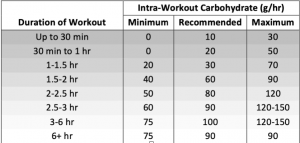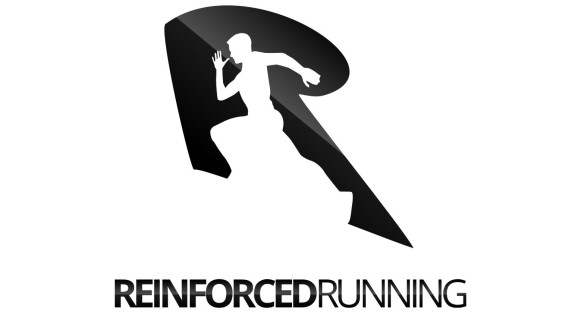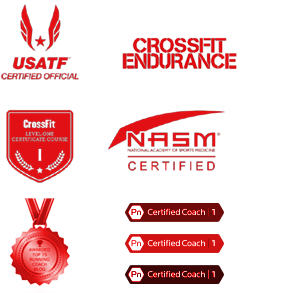Nutrition during your race and training.
A comprehensive guide to intra-race nutrition.
On race-day, If you screw up your nutrition, you will screw up your performance.
What to eat during your race can be the difference in setting a personal record or suffering through a bonkfest.
Intra-race nutrition can be as simple as eating the right amount at the right time. However, there is so much information available and tons of marketing by nutrition companies that confuse things. Every product claims that you will run faster when you buy their supplements. What to eat during your race
However, every product has the nutrients you need to keep going. But it is still unsettling to know what you need to eat and why.
The information included in this document is a resource to help you understand when to take nutrition, how much you should take, and the different products available. What to eat during your race
When to take nutrition during your run.
The longer you run, the more calories you will burn – most of which will come from your available glycogen. Carbohydrates are the primary source of glucose, which stores as glycogen. Carbs rapidly get through the system to express themselves as energy during your exercise bouts. What to eat during your race
The downside to glycogen is that you can only store a finite amount. A rule of thumb is that you can store 2000 calories in your muscles and liver. That equates to 500 grams of ingested carbs.
We recommend that you take nutrition for runs over 90 mins of easy running for the above reasons.
For a runner like myself, who weighs 165 lbs, I would have burned through about 2000 calories from a 17-mile run. When you run long, you need to supplement your training with nutrition to ensure you are staying fueled.
It is also worth noting that glycogen is not one big pool of energy. Stored glycogen in your arms can not be transferred to our legs when we start to burn through our reserves. So really, we are working with roughly half the total amount of store glycogen at any given time. What to eat during your race
As you increase the duration of your runs, you will want to eat more often. Any bout lasting over 3 hours, we recommend you start eating within 30 mins of the run. Then continue to ingest a consistent stream of nutrition for the duration of the run. Every 15-30 minutes is standard practice and works well for most runners.
What to eat during your race
Intensity matters for your nutrition
When you prepare for races 15k and above, you will most likely have speed workouts lasting over an hour in duration.
During these workouts, take nutrition early, starting at 20-30 mins. What to eat during your race
As you fatigue and burn through your energy, you will have a more challenging time engaging muscle fibers. Taking in nutrition earlier during these faster workouts will ensure that you are getting the most out of your intervals.
Suppose you have a workout with more than 30 mins of total intervals and 60+ total minutes. In that case, we recommend taking some nutrition during that bout. What to eat during your race
When you take nutrition is relatively simple, and you will learn what works for you with practice. If you follow the guidelines stated above, then you should have enough energy for your training.
Now is the tricky part.
What to eat during your training.
For the sake of simplicity, this guide will take you through which carbohydrates are available and which you should ingest.
There can be a time and place to supplement fats and protein during your run – but most endurance athletes will benefit more from carbohydrates.
 So we are going to talk about carbs. What to eat during your race
So we are going to talk about carbs. What to eat during your race
It turns out that carbs are not all created equal. Each type of carbohydrate has a different response in the body, which leads to different results.
The differences are subtle, but they can save you a gut bomb and a trip to the bathroom mid-race if you are eating and planning the right way. What to eat during your race
Types of sugars to look for during your nutrition.
Glucose
Glucose will be the fastest source of carbohydrates that enter our system. We can ingest and process up to 60 grams of glucose per hour. Glucose-based supplements will be best for shorter races 15k-Marathon as your intensity will be high, so you will need an energy source that is easy to process.
The foods highest in glucose are engineered in a lab and will be maltodextrin or Dextrose or glucose. So if you are using real food, you won’t get the same advantage as using one of the manufactured products.
Personal Note: I believe we should try our best to eat real and natural foods. But the products developed for endurance athletes will lead to better performance.
Fructose
The transporters that deliver fructose are different from glucose, meaning you can absorb more carbohydrates if you have a mixture of fructose and glucose.
It’s been shown that people, regardless of size, can process 140 grams of carbs if the combination of sugars is correct.
So why wouldn’t we just use fructose? The example above proves that we can take at least 80 grams more carbs to your system from only fructose.
The problem is that fructose is lower on the GI scale and has a higher osmolality than glucose. If you take too much fructose too quickly, you will not allow the nutrients to empty your gut. When you start to feel your stomach sloshing around or feeling bloated, the nutrients have not emptied through your gut fast enough.
Fruit Juices, Dried fruits, and whole fruits are high in fructose.
Sucrose and High Fructose Corn Syrup
Sucrose (table sugar) and High fructose corn syrup (manufactured table sugar) are in sodas and jelly candies. You will get a 50/50 split between glucose and fructose once the sucrose breaks down in your system. These sugars help fuel but are less than ideal as your primary source of carbs – especially during a shorter event.
Bottom Line
For runs, under 90 mins glucose alone can suffice. Once you surpass the 90-minute mark of training, a mixture of glucose, fructose, and sucrose will benefit your performance.
How to know what is it in the products.
Rule of thumb: Ingredients on a nutrition label are listed in order of prevalence in the product. So if Dextrose is before maltodextrin, then there is more Dextrose.
How to read endurance product nutrition labels.
Glucose – you will see the following:
- Glucose – fastest to absorb and easiest on the gut.
- Maltodextrin – derived from a combination of starches. Slower to absorb than Dextrose but needs less water to empty through the gut.
- Dextrose – derived from corn and requires and more than maltodextrin to empty through the gut.
Fructose – Often, fructose will be presented as real fruit on the ingredient list.
Sucrose – A 50/50 split of glucose and fructose are presented as cane sugar, cane syrup, honey, maple syrup, and tapioca syrup (cassava root).
Get Free Intra-Race Nutrition Ebook download here.
The available products on the market.
I spent time researching over a dozen nutrition products for the endurance athlete. I broke them into four categories
- Best for any distance
- Useful for long-distance, but less than ideal for shorter bouts and races up to a marathon.
- Best for races and efforts under 90 minutes
- Best Hydration / Fueling option.
Best for over all distances.
Maurten
Ingredients:
WATER,GLUCOSE,FRUCTOSE,CALCIUM CARBONATE,GLUCONIC ACID,SODIUM ALGINATE
Best for athletes with uneasy stomachs or those who don’t want to take water.
Gu
Ingredients (Chocolate with caffeine):
MALTODEXTRIN, WATER, FRUCTOSE, UNSWEETENED CHOCOLATE (PROCESSED WITH ALKALI), LEUCINE, POTASSIUM CITRATE, VALINE, SODIUM CITRATE, ASCORBIC ACID (VITAMIN C), CALCIUM CARBONATE, SEA SALT, HISTIDINE, GREEN TEA (LEAF) EXTRACT (CONTAINS CAFFEINE), SODIUM BENZOATE (PRESERVATIVE), CALCIUM CHLORIDE, FUMARIC ACID, POTASSIUM SORBATE (PRESERVATIVE), D-ALPHA-TOCOPHERYL ACETATE (VITAMIN E), PECTIN POWDER, ISOLEUCINE, CITRIC ACID, MALIC ACID, GINGER EXTRACT, CHAMOMILE EXTRACT.
Best for athletes who with stronger stomachs and don’t mind taking in water. Consistency and flavor are also variables to consider. The price point is lower than Maurten, which makes Gu an excellent option for training runs.
Clif Shots
Ingredients (Chocolate Cherry (Caffeine):
ORGANIC MALTODEXTRIN, ORGANIC DRIED CANE SYRUP, WATER, ORGANIC UNSWEETENED CHOCOLATE, ORGANIC CHERRY JUICE CONCENTRATE, GREEN TEA EXTRACT (CONTAINS CAFFEINE), NATURAL FLAVOR, POTASSIUM CITRATE, SEA SALT.
Best for athletes who with stronger stomachs and don’t mind taking in water. Also, for the athlete who would prefer organic products.
Hammer Gel
Ingredients (Esspresso with caffeine):
MALTODEXTRIN, WATER, ENERGY SMART¨ (GRAPE JUICE, RICE DEXTRIN), COCOA POWDER, NATURAL FLAVOR, COFFEE, SODIUM ACID SULFATE, SALT, CAFFEINE, POTASSIUM SORBATE (AS A PRESERVATIVE), AMINO ACIDS (L-LEUCINE, L-ALANINE, L-VALINE, L-ISOLEUCINE), POTASSIUM CHLORIDE.
Best for athletes who with stronger stomachs and don’t mind taking in water. Consistency and flavor are also variables to consider.
Good for long events.
Huma Chia Energy Gel
Ingredients (Mangoes):
MANGO PUREE (FILTERED WATER, MANGO PUREE CONCENTRATE), EVAPORATED CANE JUICE, BROWN RICE SYRUP, MILLED CHIA SEEDS, SEA SALT, CITRIC ACID
Best for athletes who would want to eat real food during their run. Take Huma with a combination of a glucose supplement for the best performance. Huma is excellent to take early during an extra-long run (2+ hours). You are encouraged to take with water. It also tastes great.
UnTapped Pure Maple Syrup
Ingredients:
ORGANIC VERMONT MAPLE SYRUP, ORGANIC COFFEE
Best for athletes who would want to eat real food with minimal ingredients during their run. UnTapped is better for more extended events, and you get the bonus of natural vitamins and minerals.
Honey Stinger
Ingredients (Gold):
HONEY, PURE WATER, POTASSIUM CITRATE, SALT, NIACINAMIDE (VIT B3), CALCIUM PANTOTHENATE (VIT B5), PYRIDOXINE HYDROCHLORIDE (VIT B6), RIBOFLAVIN (VIT B2), THIAMINE MONONITRATE (VIT B1), CYANOCOBALAMIN (VIT B12). MAY CONTAIN MILK.
Best for athletes who would want to eat real food. Better for longer distances events.
Better for shorter events – 1:30-2:30 or high intensity.
SIS
Ingredients (Esspresso with caffeine): WATER, MALTODEXTRIN (FROM MAIZE) (33%), NATURAL FLAVOURING, GELLING AGENTS (GELLAN GUM, XANTHAN GUM), ACIDITY REGULATORS (CITRIC ACID, SODIUM CITRATE), CAFFEINE (150MG), PRESERVATIVES (SODIUM BENZOATE, POTASSIUM SORBATE), SWEETENERS (ACESULFAME K, SUCRALOSE), SODIUM CHLORIDE, ANTIOXIDANT (ASCORBIC ACID)
- Best for an athlete preparing for shorter and high-intensity events 15k – marathon, OCR, and triathlon. Stomach friendly
Best Hydration Mixes
All hydration mixes should be used throughout the run and probably better for long distances. You will be able to take more frequently, so you’ll find the addition of sucrose and fructose in pretty much all of them. Plus, you’ll seem more Dextrose, which is better with water. Dextrose also absorbs faster than maltodextrin.
Maurten Sports Drink:
Ingredients:
MALTODEXTRIN,FRUCTOSE,PECTIN,SODIUM ALGINATE,SODIUM CHLORIDE
Best for athletes who want a simple solution without flavor.
Skratch Labs
Ingredients (Lemon Lime):
CANE SUGAR, DEXTROSE, SODIUM CITRATE, CITRIC ACID, MAGNESIUM LACTATE, CALCIUM CITRATE, POTASSIUM CITRATE, LEMON OIL, LIME OIL, LEMON JUICE, LIME JUICE, ASCORBIC ACID (VITAMIN C).
Sustain elite
Ingredients: CANE SUGAR, FRUCTOSE, CLUSTER CYCLIC DEXTRIN, RICE AND POTATO STARCH, BCAAs, ELCTORLYTES.
Best for athletes who are looking for a high end product.
Tailwind:
Ingredients (Green tea with caffeine)
NON-GMO DEXTROSE (GLUCOSE), NON-GMO SUCROSE, CITRIC ACID, SODIUM CITRATE, SEA SALT, ORGANIC FLAVOR, POTASSIUM CHLORIDE, MAGNESIUM CITRATE, CALCIUM CARBONATE, ORGANIC CAFFEINE (70MG PER PACKET) GLUTEN FREE/VEGAN/NO SOY/NO DAIRY
Best for athletes who would prefer an organic and non-GMO option.
How much to nutrition to take during exercise.
Below is a chart that makes it easy to follow. As the events get longer in duration, you will absorb more food through the gut as your intensity will be lower.

The higher-end is very high – and this does not mean you should take the recommended amounts all in one shot – ingest your carbs in 15-30 min cycles. Practice during your training runs is crucial.
Get Free Intra-Race Nutrition Ebook download here.
In summary:
There are a lot of factors and products to consider when making your nutrition choices. You are your own test subject, so I suggest trying as many options as possible.
If you would like to inquire about nutrition coaching from Reinforced Running, check out our options here to see if you would be a good fit.
Follow us on:
Subscribe to the Reinforced Running Podcast
Inquire about personal coaching here.
Email questions to [email protected]

